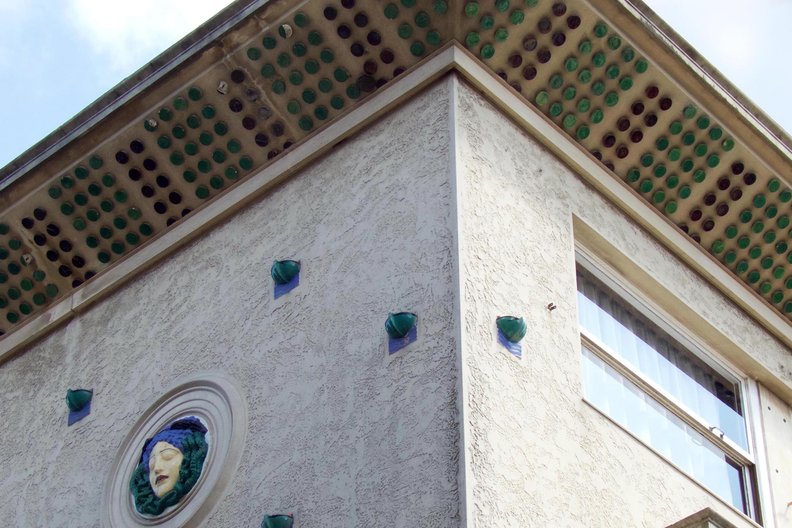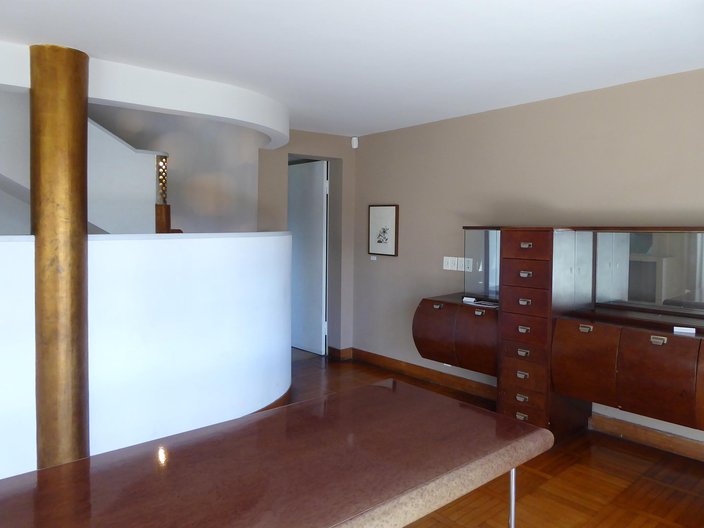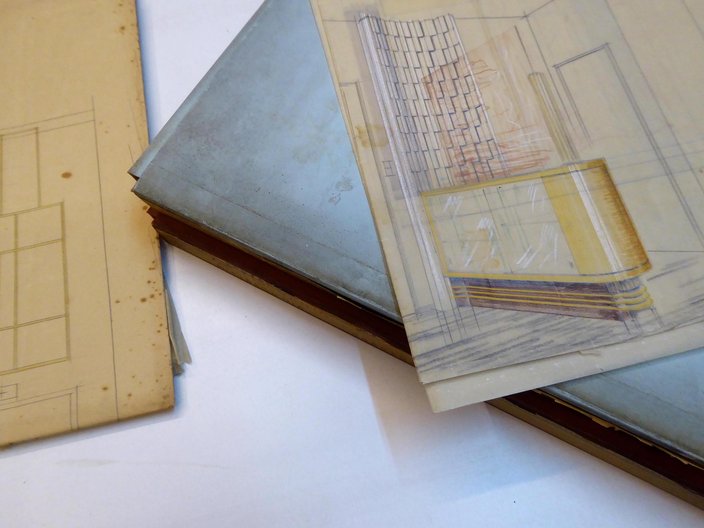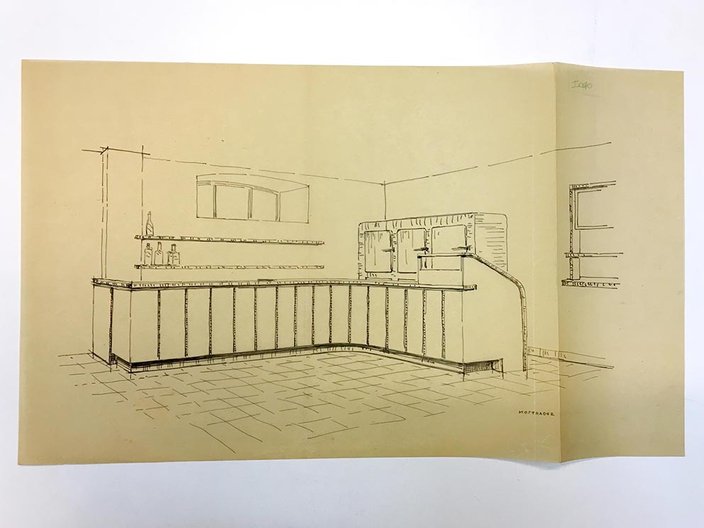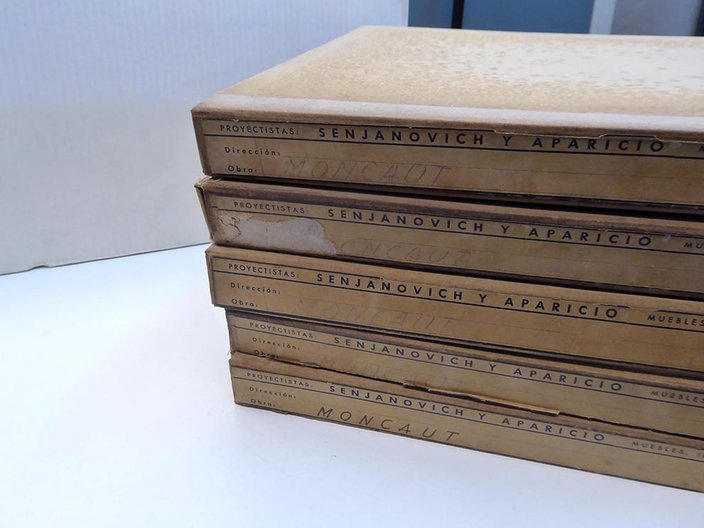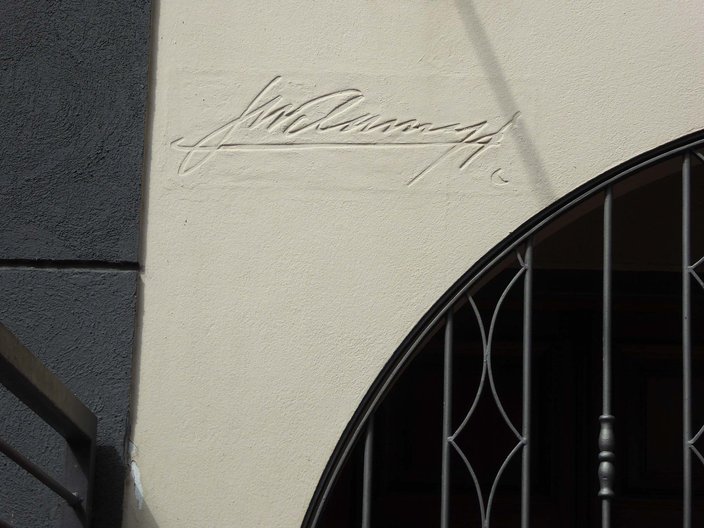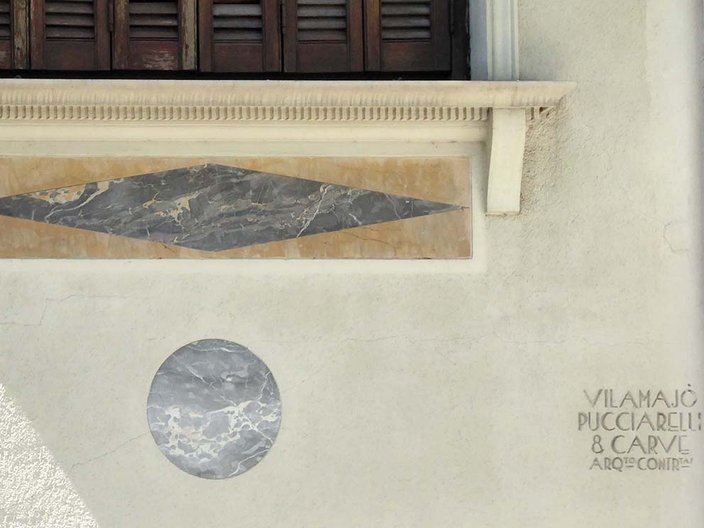11 October 2017
by Matteo Fogale
This is the first in a series of writings by Matteo Fogale, who has been selected to take part in the Julio Vilamajó Residency. Matteo is currently in Uruguay researching the work of architect Julio Vilamajó (1894-1948) and his legacy in design and architecture in the country today.
In this very inspiring first week of my residency I had the pleasure to meet architect Monica Nieto, director of the Casa Museo Vilamajó and Dr. Gustavo Scheps, Dean of the Facultad de Arquitectura, Diseño y Urbanismo here in Montevideo. Straight after our meeting Monica took me for a guided visit of the Casa Museo Vilamajó, a house the Architect built for himself and his family in 1929 at only 35 years old. The house is right next to the Parque Rodó in Montevideo and is the first modern dwelling to open its doors as a house museum in Uruguay.
The house
Set in a corner with only 29x21 feet of useful area, the architect built himself a residential tower providing privacy but also carefully conceding the outdoor space.
A regular pattern of small ship bows decorates the facades and a medusa head with her eyes closed guards the entrance of the building, it is said she would petrify anyone trying to enter the house without permission.
What strikes me most at this point is there is no main door to the entrance of the house. Instead we enter from the garage gates. This was the only access and although the feeling and look of it once inside is pretty much that of an indoor space, Vilamajó managed to make the space feel something that is right between the outside and the inside. In fact this is the only ‘room’ of the house where he uses stone, not only on the ground but also on the walls and once the gates are left completely open this becomes clearly a covered garage.
Once we are inside, walking up the the geometric and repetitive staircase we can notice how different each floor is even if they are always the same in shape and size. Theres a very interesting dynamic going on in the circulation of every floor, each very different and unique, always intended for their specific use, with different light, materials and colours.
From the first floor, dedicated to the living area, I’m impressed by the built-in shelves in contrast with the loose furniture pieces, very geometric and modern shapes contrast with soft furnishing and a calm, light blue colour with strong flower patterns on a golden colour.
Upstairs the dining room, differently from what we saw downstairs, presents itself with some furniture with really strong character. A large cabinet occupies the entire wall - in fact, the entire corner of the room - and its long mirror reflects the opposite window, creating an interesting game of reflections. A large dining table is set in the middle of the space and now we have access to what we could call the terrace, leading to the garden, accessible also from the living room. From here we can appreciate how the actual garden is not at street level but raised a level up. There is then another small garden with a fountain between levels, breaking up the space in so many different planes.
The bedroom is probably the most intriguing one, clearly changed from the original plans to accommodate Vilamajó’s sister who at one point moved in with the architect and his family. Designed to feel like a boat cabin, we can see wood all around the room, it feels very cosy and again the play of mirrors breaks up the space, giving the idea of those large openings we could find in the windows downstairs now but in a more reserved space.
The contrast is obvious when we reach the last floor, a space dedicated to Vilamajó’s own studio. Up in the sky, hidden from the road but with a striking view, it is set behind the cornice making it impossible to see it from below. The position of the house is very strategic as it was then set at the edge of the city, looking into the countryside and the north, a priviliged position in relation to sunlight in the Southern Hemisphere. In this room, the windows magically open until they disappear behind the walls, transforming the room into an open terrace.
The archives
For the next few days I am confined to an amazing room at the Insitituto de Historia in the Architecture Faculty, where the archives are held. A room full of old books and folders, and donations made to the Instituto and archives of decades of history. Here I was introduced to the exhaustive collection of folders that once belonged to Vilamajó and many of the architect's most trusted carpenter, donated in 2005 to the Instituto by one of the employees. Unfortunately these are the only records left of most of the work contained in these precious folders. Everything from sketches to production drawings, notes and some photos can be found here. As a designer and a furniture maker mysefl, I found this to be precious material for my residency. I’ve been through hundreds of original drawings, documenting as much as I can and being very inspired by everything I’ve seen or discovered. Not only about Vilamajó’s work but also about the fabrication methods of the period, materials used and techniques. I could spend years inside this room!
Discovering
But I had to get out! So I’ve spent the last day of my week walking around the neighbourhood, searching for Vilamajó's buildings. Incredibly as it sounds the only reference I had was a map from a magazine printed back in 1991, so I found myself looking for demolished houses or numbers changed. But all this made it even more exciting and special, actually finding one of those houses with its clear signature on the facade made me jump of excitement. Some are currently occupied, some for sale and others left empty.
But for sure they all stand out from the crowd. After insisting and a bit of luck, I managed to be granted permission to enter some of these buildings, one of which no one has seen inside for over 20 years and it appears to be nearly untouched. So this is going to be an interesting opportunity to see a house in its original condition, so I’m looking forward to my next week when all this is going to happen!
To find out more about the exciting residencies, fellowships and travel grants we offer head to our Opportunities page and follow us on Instagramand Twitter.
Category
Travelogue
Location
Uruguay
